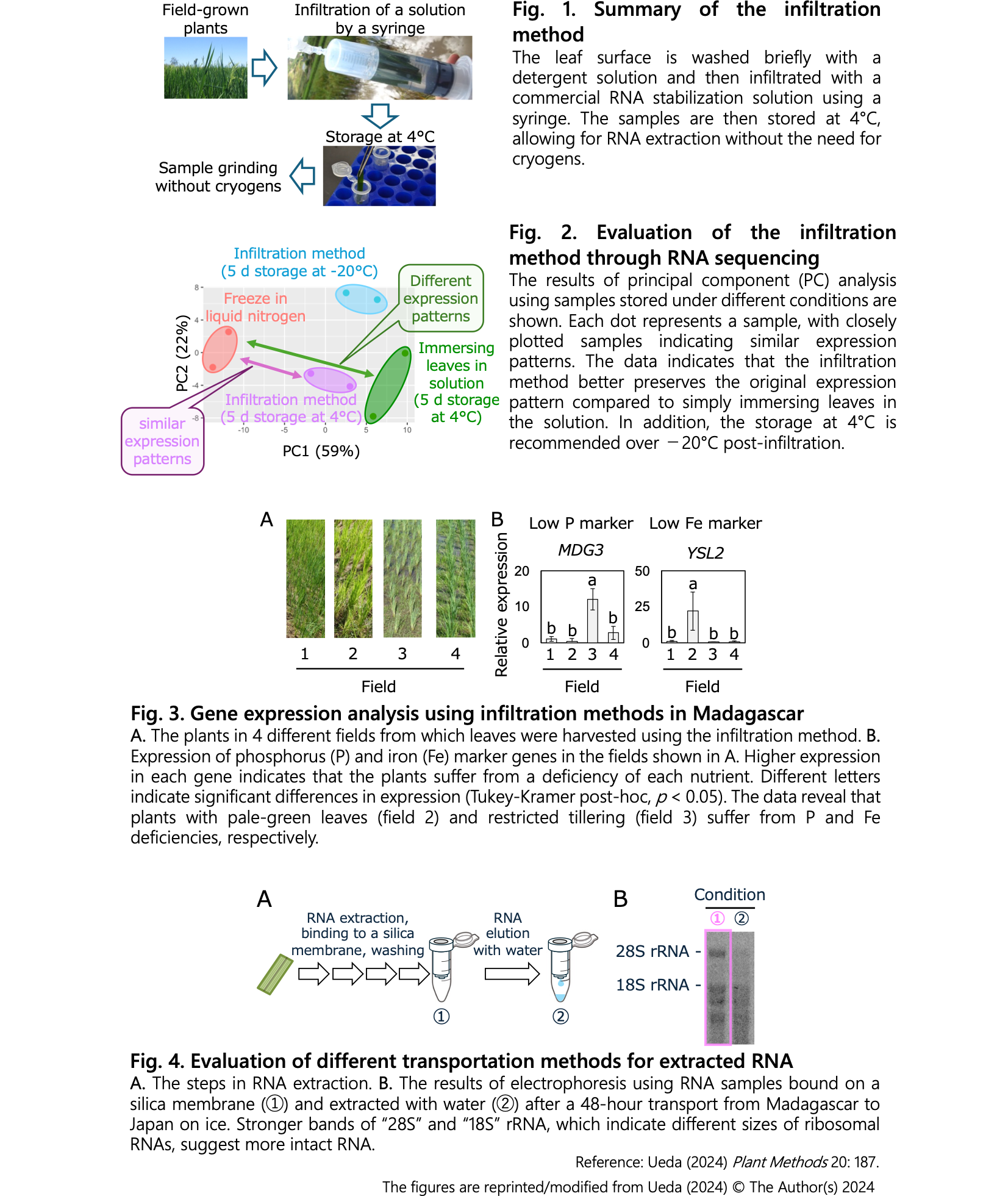Development of a cryogen-free extraction and preservation method for plant-derived RNA
Description
Increasing the resilience of plants to environmental stress is crucial for improving crop yield. Understanding gene expression patterns provides insight into stress tolerance mechanisms and accelerates the development of high-performance crops. RNA used for gene expression analysis is unstable, and its analysis usually requires cryogens such as liquid nitrogen and dry ice. Thus, gene expression analysis in samples from developing countries with limited access to cryogens has been challenging. While companies have released RNA preservation reagents that maintain the quality of RNA in living organisms without cryogens, the effects of different sample storage conditions on overall gene expression patterns and the optimal storage conditions for maximizing RNA stability in plants have not been thoroughly investigated. In addition, the long-distance transport of extracted RNA without cryogens has also been a hurdle. Considering the application in developing countries, this study aimed to establish cryogen-free methods to transport 1) high-quality plant leaf specimens from the field to the laboratory for gene expression analysis, and 2) isolated RNA for genomics analysis.
In the newly developed “infiltration method,” a commercial RNA preservation reagent is infiltrated into the apoplast (intercellular space) of a plant leaf using a syringe (Fig. 1). When comparing the expression patterns in rice leaf samples treated with the infiltration method to those simply immersed in the solution (both stored at 4°C for 5 days), the former better preserved the original RNA expression pattern obtained by freezing samples with liquid nitrogen (Fig. 2). The effectiveness of the developed infiltration method was validated in Madagascar by demonstrating that leaf samples from fields with poor plant growth exhibited significantly higher expression of phosphorus deficiency- or iron deficiency-inducible genes (Fig. 3). Thus, the use of the infiltration method allowed for detection of nutrient disorders even without the use of cryogens in a developing country. Additionally, it was found that the extracted RNA remained relatively stable (for 48 hours) when bound to a silica-based membrane compared to being in a solution (Fig. 4).
One limitation is that the infiltration method may bias salinity- or cold stress-related genes compared to freezing with liquid nitrogen, and caution should be taken when analyzing such stresses using the infiltration method. Nevertheless, the application of the infiltration method is expected to accelerate gene expression analyses in plant samples collected from fields in developing countries. The possibility of long-distance transport of RNA without cryogens offers the possibility to run genomics studies (e.g. RNA sequencing) using such samples.
Figure, table
- Research project
- Program name
- Term of research
-
FY2022-2024
- Responsible researcher
-
Ueda Yoshiaki ( Crop, Livestock and Environment Division )
ORCID ID0000-0002-4304-368XKAKEN Researcher No.: 70835181 - ほか
- Publication, etc.
-
Ueda (2024) Plant Methods 20: 187.https://doi.org/10.1186/s13007-024-01311-2
- Japanese PDF
-
2024_B01_ja.pdf1.05 MB
- English PDF
-
2024_B01_en.pdf799.59 KB
* Affiliation at the time of implementation of the study.

